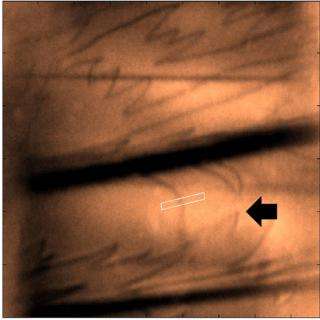Breaking the nanometer barrier in X-ray microscopy

Argonne National Laboratory scientists in collaboration with Xradia have created a new X-ray microscope technique capable of observing molecular-scale features, measuring less than a nanometer in height.
Combining x-ray reflection together with high resolution x-ray microscopy, scientists can now study interactions at the nanometer-scale which often can exhibit different properties and lead to new insights. Improving our understanding of interactions at the nanoscale holds promise to help us cure the sick, protect our environment and make us more secure.
This novel technique will lead to a better understanding of interfacial reactions at surfaces, such as ion adsorption, corrosion, and catalytic reactions. In particular, this method extends the capability of x-ray microscopy to observe sub-nanometer-sized interfacial features directly and in real time. This non-invasive approach complements the more widely used scanning probe microscopies and can image the topography of a solid surface without using probe-tips near the surface.
Argonne researchers together with Xradia, a firm specializing in x-ray optics and x-ray microscope systems, have achieved sensitivity to sub-nanometer sized features by using a phenomenon known as phase contrast. This breakthrough makes it possible to look directly at individual steps on a solid surface, borrowing a technique used previously in electron microscopy.
"The ability to see individual nanometer-scale features is an important benchmark for X-ray microscopy" states Paul Fenter, Argonne National Laboratory Physicist. "Understanding interfacial reactivity is vital to many areas of science and technology, from the corrosion of metals to the transport of contaminants in the environment." Steve Wang of Xradia adds, "This technique opens up the possibility of watching these processes directly and will provide fundamentally new opportunities for understanding them."
This is a significant advance towards understanding the reactivity of solid-surfaces. Future studies will extend these measurements to the observation of real-time processes of mineral surfaces in contact with water. Employing a novel x-ray microscope setup developed by Xradia, and measurements performed at Argonne's Advanced Photon Source, home of the most brilliant X-ray source in the Western Hemisphere, was central to the teams' success.
Source: Argonne National Laboratory





















